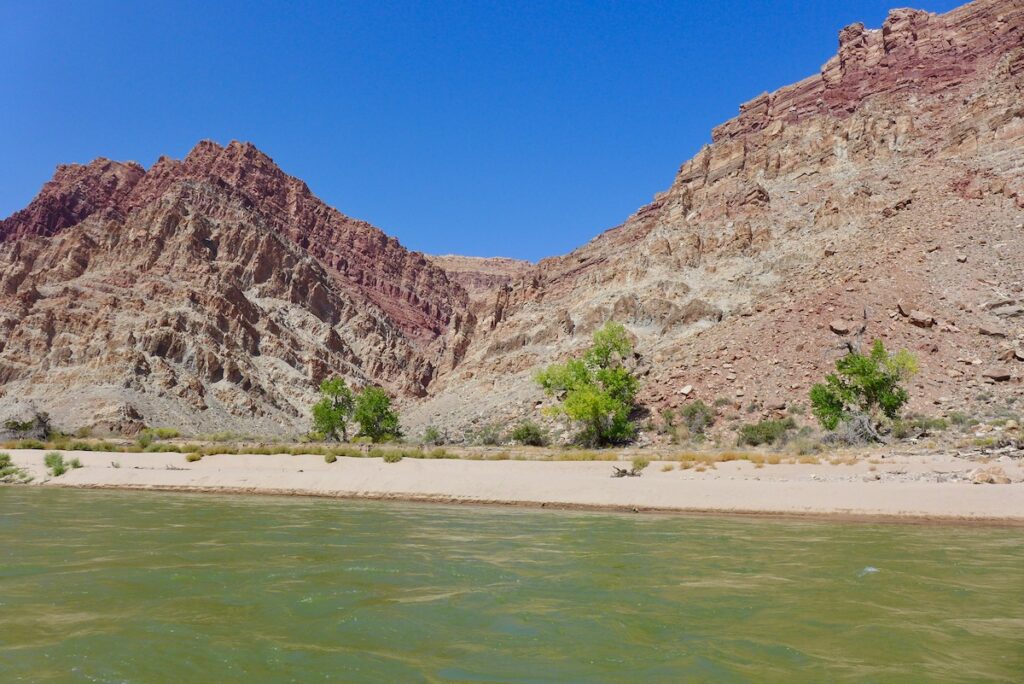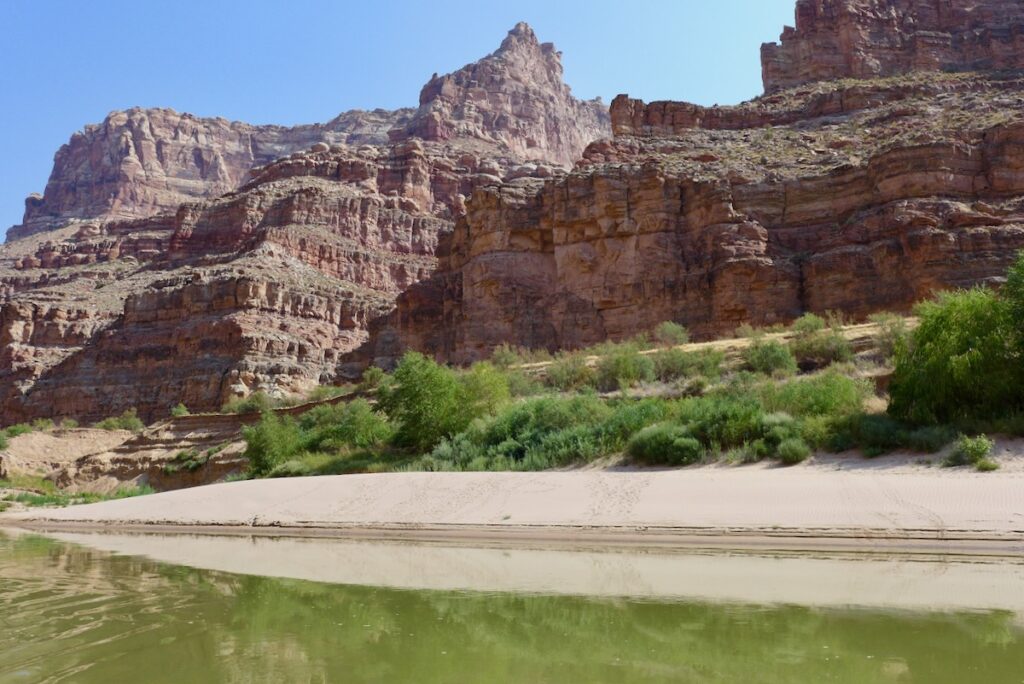
A recent study of a program that could pay irrigators for their water to bolster streamflows found that the benefits would be comparable to the negative secondary impacts. But that finding doesn’t take into account what some say is a new worrisome trend in Western Slope water-rights ownership: a New York City-based private equity fund buying land and the water tied to it.
The study, commissioned by the Colorado River Water Bank Work Group, looked at the secondary economic impacts of a potential water-use-reduction program — known as demand management — on Western Slope communities. The Water Bank Work Group is composed of the Colorado River Water Conservation District, Southwestern Conservation District, Grand Valley Water Users Association, The Nature Conservancy and other entities.
Denver-based BBC Research & Consulting ran the numbers for two hypothetical water-use-reduction scenarios.
Under the moderate scenario, irrigators across western Colorado would reduce their consumption of water by 25,000 acre-feet annually. Under an aggressive demand-management scenario, each of the four river basins on the Western Slope — Yampa/White, Colorado, Gunnison and San Juan/Dolores — would each reduce its annual consumptive use by 25,000 acre-feet, for a total annual reduction of 100,000 acre-feet of consumptive use.
The study came about because the state of Colorado is investigating whether to implement a demand-management program where irrigators are paid to voluntarily and temporarily fallow fields and leave more water in the river in order to fill a 500,000-acre-foot pool in Lake Powell. This saved water could be used as a modest insurance policy to help protect the Upper Basin against a compact call. The Water Bank Work Group is concerned with the potential economic impacts to agricultural communities of fallowing agricultural lands as part of such a program.
The study found that payments to irrigators should range from $194 to $263 per acre-foot of water. Annual demand-management payments across western Colorado would total almost $5.9 million under the moderate scenario and nearly $24 million under the aggressive scenario.
The reduction in crop production — in western Colorado, about 90% of irrigated acreage produces grass hay or alfalfa — is likely to create a trickle-down effect and result in fewer purchases of seed and fertilizer and reduce the need for labor, hauling and other services, the study found.
Some agriculture jobs would be lost, but the infusion of money from payments would create jobs in other areas of the economy, including the service sector. The net job loss across western Colorado would be between 14 and 49 secondary jobs under the moderate scenario and between 72 and 222 jobs under the aggressive scenario, the study found.
Doug Jeavons, managing director of BBC Research & Consulting, conducted the study and has given several presentations in recent weeks about its findings. He said that while the net job loss sounds minimal, the impacts could be greater in certain areas if farms participating in a program are not spread out equitably across basins.
“In terms relative to the overall size of the western Colorado economy, the numbers are not that large,” he said. “I do think there’s a risk depending on how the program is set up and administered, that the participation in the program could be much more geographically concentrated, and certainly if most of the participants are within a relatively small area, the impacts could be bigger.”
According to the study, agricultural activity in western Colorado provides about 13,600 jobs, which is about 3% of total jobs in the region. By comparison, tourism provides 75,400 jobs.

Game changer
But these study results don’t paint the full picture, said River District general manager Andy Mueller. The study assumes that participants in a demand-management program would be owner-operators of the land being temporarily fallowed. They would probably take the payments they receive from a demand-management program and spend them locally, invest them back into their business or use them to pay down debt. But the negative impacts could be greater if the money paid to irrigators flows out of the region.
In recent years, the New York City-based private equity fund Water Asset Management has been buying up land and the water rights tied to it in the Grand Valley. An investigation by Aspen Journalism and KUNC found that as of June, WAM had spent $16.6 million buying 2,222 acres of irrigated land in the farming communities west of Grand Junction, making it the largest landowner in the Grand Valley Water Users Association.
In many cases, WAM makes improvements to irrigation infrastructure and leases the land back to tenant farmers, who keep it in agricultural production.
WAM representatives have said the company would be interested in participating in a demand-management program.
Mueller called this shift away from small family farm ownership a game changer and said there is a likelihood of significant economic harm to Western Slope communities.
“If you pay New York-based investment companies and they take that money and return it to their investors who live in New York or elsewhere, the money doesn’t get reinvested in the community,” he said. “Tenants are not receiving payments under a demand-management program, so their livelihoods have disappeared.”
Jeavons agreed that money paid to absentee landlords through a demand-management program probably wouldn’t stay in the community.
“The analysis we did assumes that most of the participants would be family-owned farms and ranches because most of the ranches and farms in western Colorado are family owned,” he said. “I think it’s pretty clear that if you have outside investors that are essentially trying to make a profit from this kind of program, that would certainly change some of these results.”
Partly in response to WAM’s activities in western Colorado, the Colorado Department of Natural Resources has convened a workgroup to explore ways to strengthen the state’s anti-speculation law.
But at least one Colorado water-policy expert doesn’t see a problem with WAM’s receiving payments for participation in a demand-management program. James Eklund is the former director of the Colorado Water Conservation Board and one of the architects of the Drought Contingency Plan, which allowed for the creation of the 500,000-acre-foot pool in Lake Powell.
He represents WAM as counsel but said his comments to Aspen Journalism for this story were not on behalf of the company. WAM representatives could not be reached for comment.
Eklund said the biggest threat is not out-of-state investors but, rather, climate change. He said filling the Lake Powell insurance pool as quickly as possible should be the goal.
“The Colorado River is facing an existential threat to its water supply that requires solutions at scale (500,000 acre-feet annually at minimum),” he said in an email. “If investment groups are willing to invest in solutions that keep agriculture in production, while also making more water available for the benefit of our state and the environment, we should encourage that investment, just as we do in other sectors.”
Aspen Journalism is a local, nonprofit, investigative news organization covering water and rivers in collaboration with The Aspen Times and other Swift Communications newspapers. This story ran in the Oct. 28 edition of The Aspen Times and the Oct. 26 edition of The Steamboat Pilot & Today.
The Water Desk’s mission is to increase the volume, depth and power of journalism connected to Western water issues. We’re an initiative of the Center for Environmental Journalism at the University of Colorado Boulder. The Water Desk launched in April 2019 with support from the Walton Family Foundation. We maintain a strict editorial firewall between our funders and our journalism. The Water Desk is seeking additional funding to build and sustain the initiative. Click here to donate.





